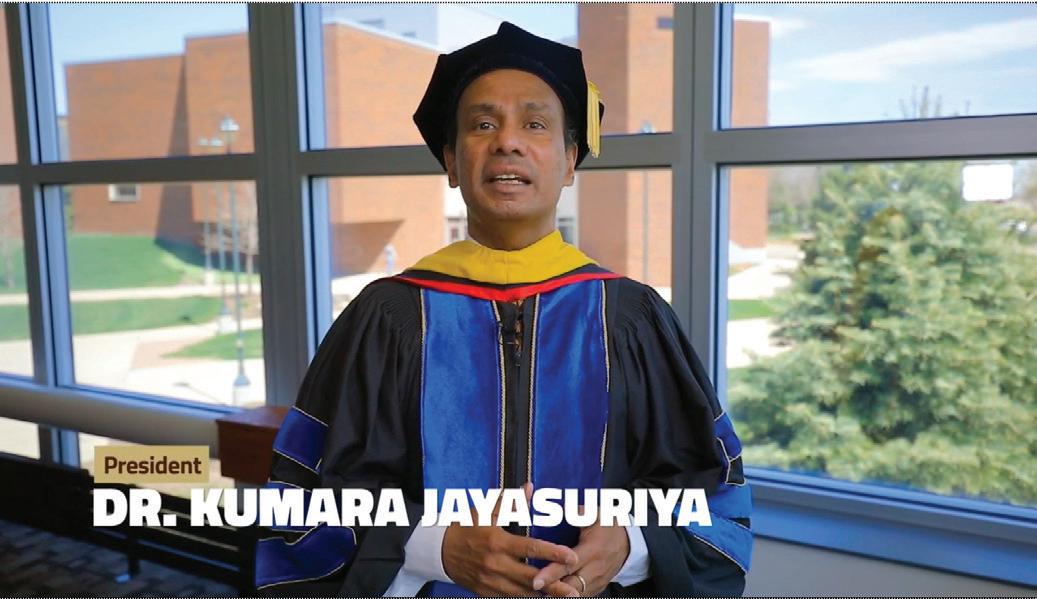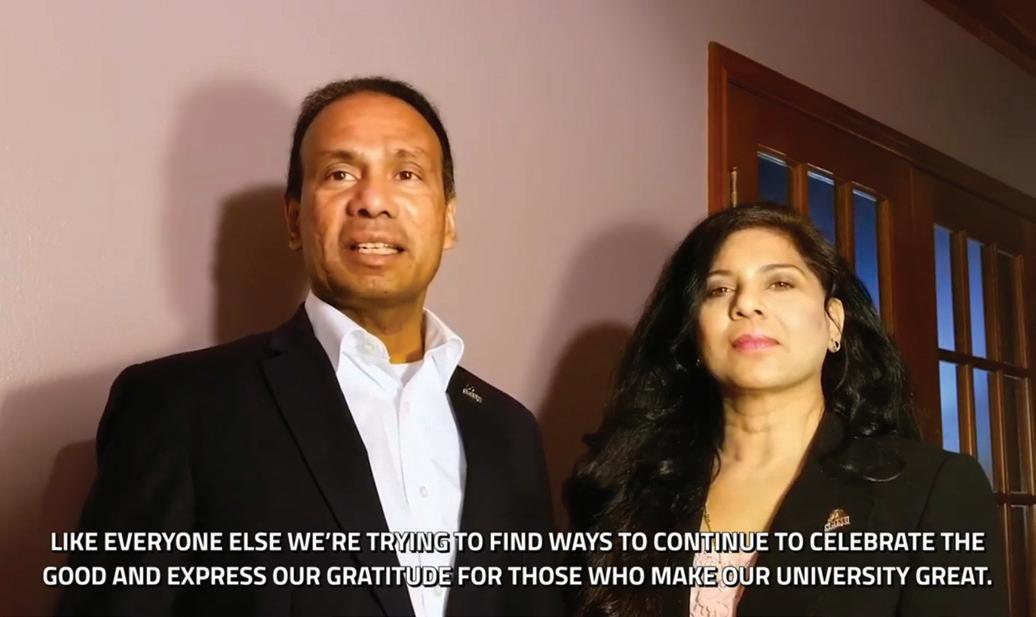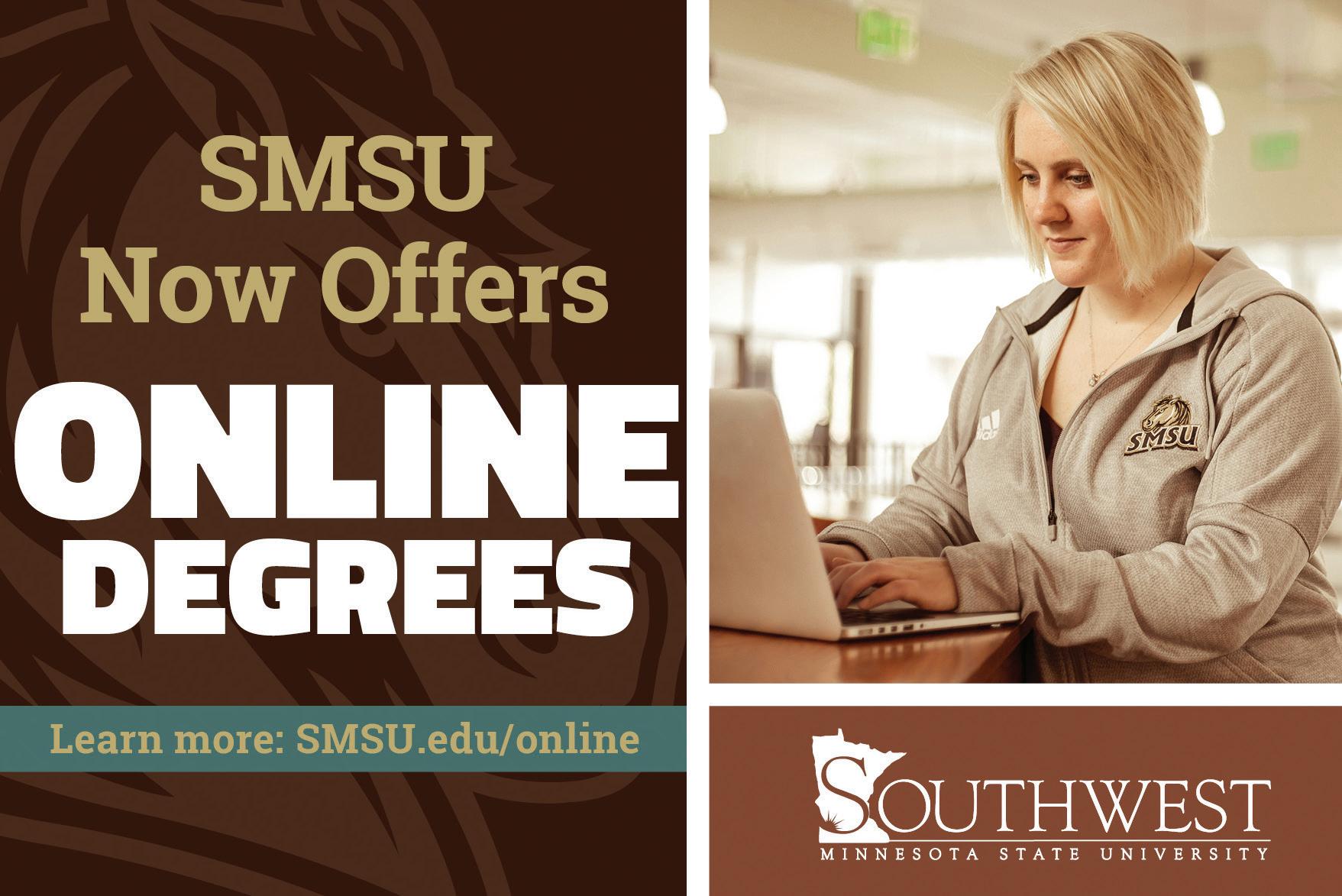
6 minute read
SMSU President Kumara Jayasuriya
Reflecting on the first year
President Kumara Jayasuriya celebrates his one-year anniversary at Southwest Minnesota State University on July 1. Many new, successful initiatives have been undertaken since his arrival, and despite the disruption of COVID-19 pandemic, he looks forward to continued progress on many fronts at SMSU. We sat down with President Jayasuriya for an insightful question and answer session.
Q. Your first year as president has really had some unusual twists and turns, hasn’t it?
A. It has, indeed, been an unusual year to start my presidency. However, I feel like this unprecedented situation made me a stronger leader. In addition, this pandemic has unequivocally shined a bright light on the resiliency, and adaptability, of the University.
Q. Can you talk about the COVID-19 pandemic experience from your perspective?
A. It came quickly. This is an unprecedented time. No one I know was trained to handle a situation like this. In a difficult situation like this, people put their differences aside and worked together for a common goal. That is what SMSU did. Think of it — we went to online course delivery in two weeks. That says so much about our Mustang Community and the commitment we have to our students. So far, we have done very well in managing this difficult situation. We still have a long way to go. However, since everyone is working together to overcome a common enemy (COVID-19), we will prevail. The health and well-being of our students, faculty, and staff are our number one priority. As such, all our future plans, such as a business resumption plan, revolve around this goal. My concerns are about future enrollment, and our finances. Even though SMSU is doing well in terms of enrollment at the moment, there are many pundits who predict a 15-20 percent decrease in enrollment at most small universities such as SMSU. As far as finances are concerned, we have already spent thousands of dollars due to COVID-19 in terms of refunds, cancellation of events, etc. We received some relief funds from the federal government.
Q. How would you say the University community has responded?
A. First, let me say I am very thankful for the leadership and guidance provided by Chancellor Devinder Malhotra, the Minnesota State trustees, and the Minnesota State system. SMSU, like other universities and colleges in Minnesota, had to immediately pivot to deliver all of our courses in an online format in roughly two weeks. That is a Herculean effort. If someone had asked me four months ago if we could convert all our courses into online delivery, I would have said, “Impossible.” Through creativity, innovation, and lot of hard work, our faculty and staff got it done. I am very grateful for their flexibility and dedication to SMSU. Also, our pandemic team was able to quickly come up with a plan for most people to work remotely. I am extremely proud of our Mustang Family. It’s true that all Mustangs run together.
Q. SMSU has increased the number of degrees offered completely online to 11 — will this COVID-19 experience increase that number in the future?
A. Yes. Every difficult situation presents opportunities. As we were converting all our spring classes to online format, many faculty had to learn how to teach in an online format, as well as new technologies. I am sure the situation we are in presents some opportunities to create more online and hybrid programs. I think we are at a good place now. I do want to make sure that these programs are at a certain level before we add more. We are increasingly moving in that direction, and I have no doubt these types of ideas will initiate organically.
Q. What did you learn about the University during the COVID-19 experience?
A. I learned that Mustangs are resilient, innovative, and collaborative. As you know, this is a farming community. Hard work is not a new concept for Mustangs. That is what this situation allows us to show to the world.
Q. One of your priorities when you came to SMSU was enrollment. Are you happy with where the University sits heading into fall semester, given the fact that so many institutions are facing enrollment declines?
A. I am very happy about the position we are in as far as the enrollment is concerned. SMSU is up in enrollment by 7.1 percent at the beginning of our summer session on May 26. In addition, our freshman cohort is about 10 percent up at this point for Fall semester 2020. This is a very uncertain time, so things can change quickly, but I am certain our freshman class will be bigger than last year.
Q. Your President’s Regional Scholars program was innovative in its concept and was a good way to connect with regional high schools. Will that continue in the future? What are your impressions of the program and its results?
A. What we did there was investing our resources in the region we serve. As a result, the scholarships are helping us grow our freshman class. We offered three full-ride scholarships, as well as others, based on academic criteria, in an effort to keep our best and brightest high school graduates close to home, attending SMSU. Everyone is very excited about that. We still have a long way to go and a lot to learn from this experiment. However, we will definitely try to continue the President’s Regional Scholars program in the future.
Q. What have you learned about SMSU’s role in this part of the state?
A. SMSU is the economic engine of southwest Minnesota, with an economic impact of $173 million. We are very connected with the people and businesses in Marshall, but we need to work harder to connect with areas around Marshall. This is one of the reasons we created the President’s Regional Scholars initiative, to try to include schools from other communities within the region. We need to do more in that area. I need to get out more and work with people in Southwest Minnesota. I am planning to increase my activities outside of Marshall after the COVID-19 situation is over.
Q. What are some goals as you head into your second year?
A. We will set new goals for the new academic year during this summer. We will have to work on reducing the achievement gaps of the underrepresented students, work towards financial sustainability, and increase student success. Future enrollment, budget and campus diversity remain the three major threats to SMSU. We will work on a plan to leverage our strategic position as a university in the Minnesota State system, as well as a vibrant institution in the southwest region of the state.
Q. What are you proud of, looking back over your first year?
A. I am very proud of the achievements of our team. First, changing enrollment patterns, especially in the midst of a pandemic, is unheard of. We also built 11 online programs, offered more scholarships than before, and created new programs — such as Mustang Pathways — to increase access for underrepresented students. My contribution to these initiatives is a very small part of the pie. It is a team effort. Many people worked tirelessly to achieve these. I am very grateful for everyone’s contributions.
Q. What are the University’s plans for the fall as far as classes, etc.? A. The Minnesota State system office provided three scenarios for campuses to plan around. We decided to use the one that takes the middle-of-the-spectrum approach. There is a lot that we don’t know at this point. But one thing is certain: We are planning on opening the campus this fall. We are planning to have face-to-face classes, hybrid classes, hy-flex classes, and online classes. Whatever we do, we will follow Center for Disease Control guidelines as well as guidelines coming from the governor’s and system offices.

Video messaging became the new normal for communications during our distance learning phase.
SMSU Communications and Marketing Office

Dr. Jayasuriya congratulates the Class of 2020 in a special video greeting.
SMSU Communications and Marketing Office

Dr. Jayasuriya and his wife, Salmini, congratulate the winners of the Campus Compact awards.
SMSU Communications and Marketing Office




